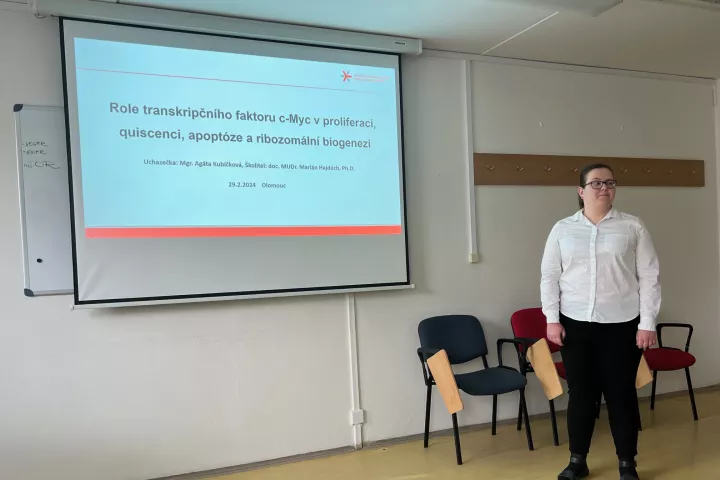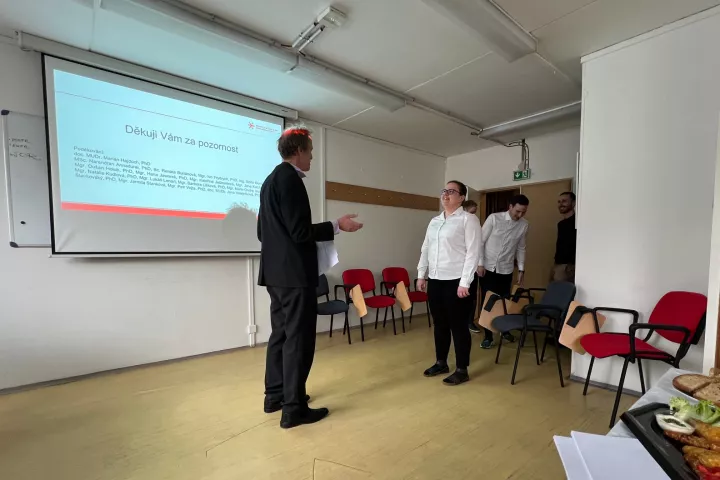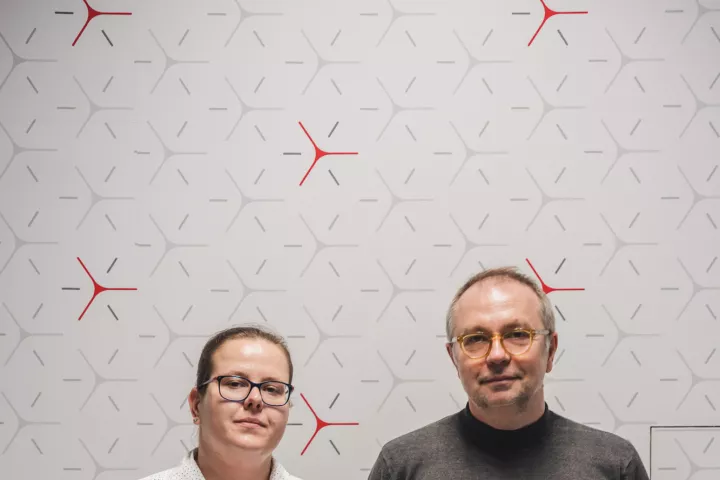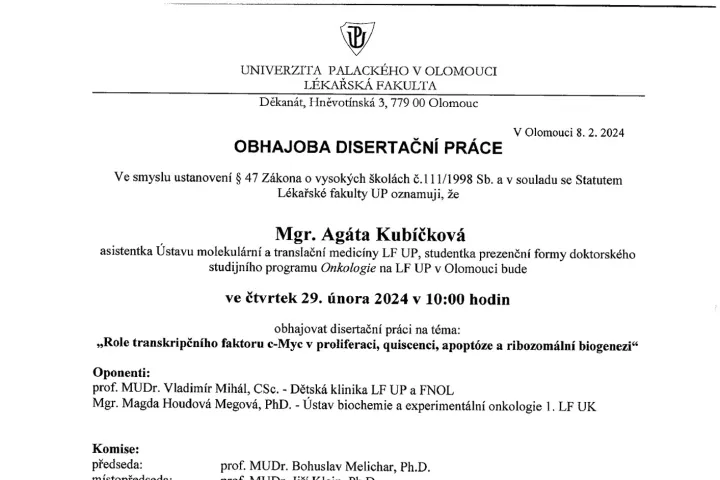Congratulations to our colleague Agáta Kubíčková for successfully defending her dissertation thesis on Role of Transcription Factor c-Myc in Proliferation, Quiscence, Apoptosis and Ribosomal Biogenesis.
Mentor
Marián Hajdúch
Abstract
This dissertation thesis contains three research projects focusing on the c-Myc oncogene. In a detailed characterization of the biological effects of triterpenes, derived from natural compounds, we identified a link between their anticancer effect and reduced c-Myc levels. Given our department's focus on the development of anticancer therapeutics, including triterpenes, and the possibility of using a robotic platform for highthroughput screening, we established a cell line with a reporter monitoring c-Myc transcription factor levels. In pursuit of the second goal, we retained the c-Myc locus within the design of this cell line with minimal modification, which was the incorporation of a reporter tag into the C-terminal region of the protein using CRISPR/Cas9. This preserved the physiological expression of c-Myc and provided a unique opportunity to monitor the expression dynamics of both major c-Myc isoforms. Both reporter systems have been described and validated in detail.
For the high-throughput screening, we optimized the conditions and selected a reference antagonist, substance 10074-G5. We are now performing a primary screen of commercially available chemical libraries to identify agents that reduce c-Myc pro-proliferative functions at the expense of those that promote quiescence or cell death. During the validation of c-Myc reporter cell lines, we identified additional regulators of the expression of these isoforms, the transcription factor -catenin and ribosomal proteins, in addition to the previously described mTOR and PKR kinases. The third part of the thesis focuses on ribosomal biogenesis, which is significantly influenced by c-Myc. We document the pathophysiological manifestations of ribosomal stress in RPS7 and RPL11 haploinsufficiency. We established two types of cellular models: the first one by using siRNA knockdown to reduce RPS7 and RPL11 gene expression. The second one by disabling the expression of one allele of RPL11 and introducing a point mutation for RPS7 using CRISPR/Cas9. Both models show pathophysiological manifestations associated with Diamond-Blackfan anaemia and ribosomal stress. The cellular model generated by CRISPR/Cas9 is indispensable for studying specific mutations. With this, we would like to emphasize the importance of CRISPR/Cas9 technology in the development of cellular models for a better understanding of the pathophysiology of rare diseases and consequently for finding new therapeutic approaches also for cancer malignancies. In this thesis, we also summarized the previously known information about the c-Myc locus and its isoforms with potential in targeted cancer therapy.
Full information is available on theses.cz.




